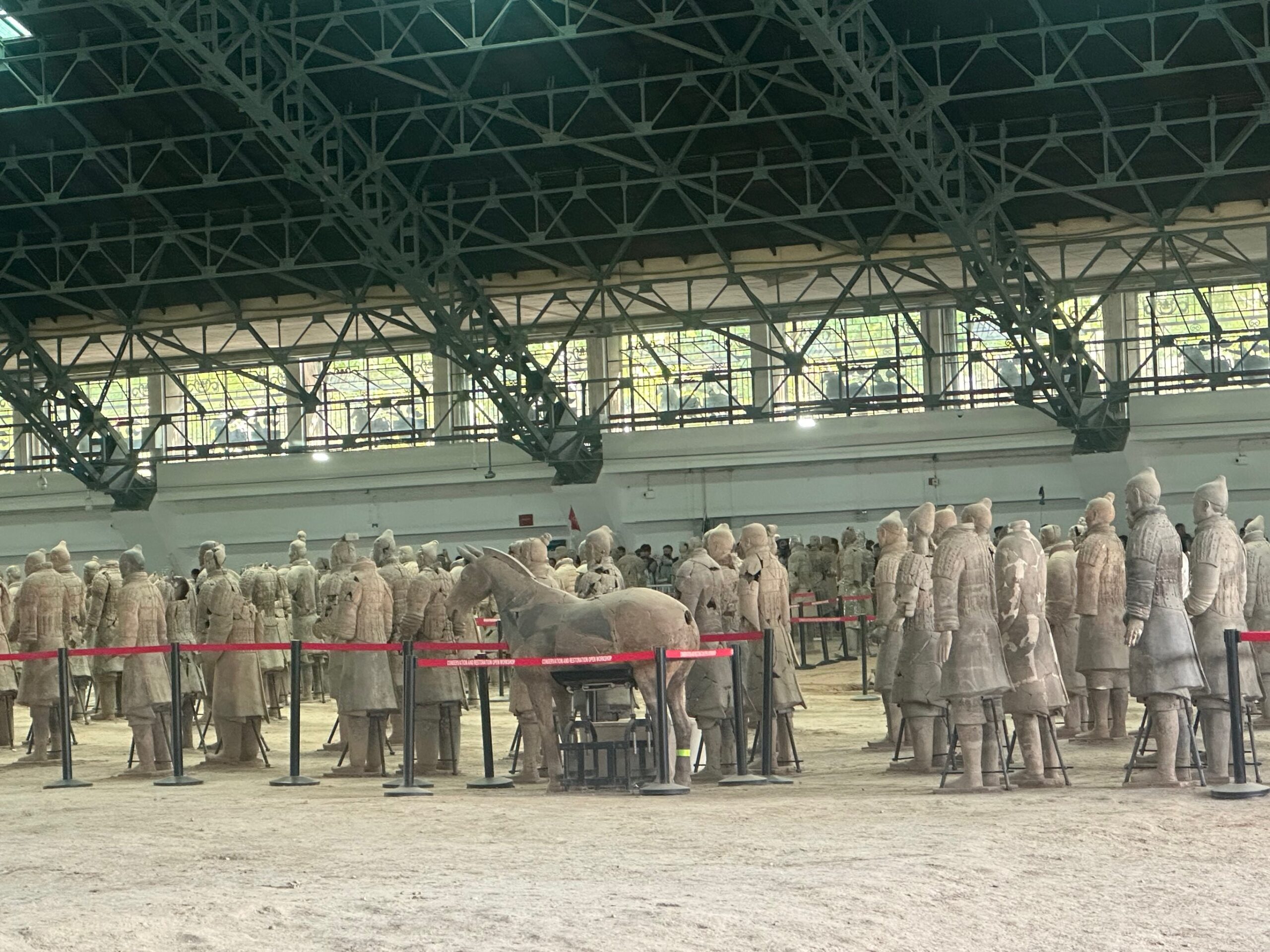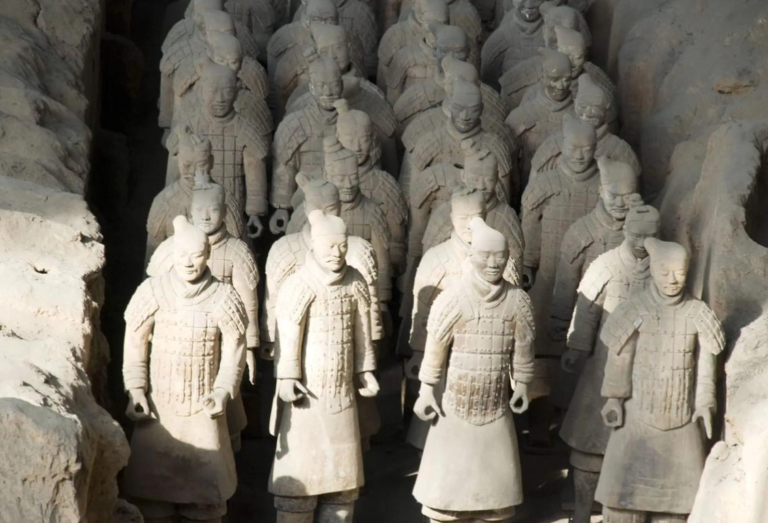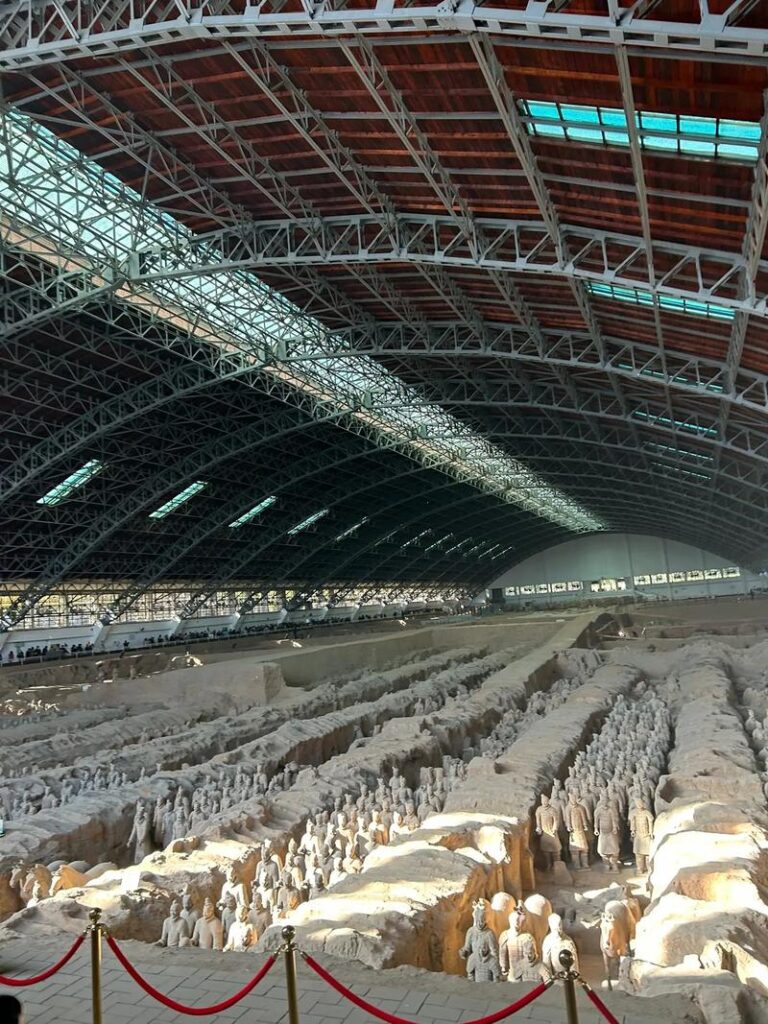Which city is the Terracotta Army in?
The Terracotta Warriors and Horses are located at the foot of Mount Li in Lintong District, Xi’an City, Shaanxi Province, in northwest China.
City of Terracotta Warriors: Xi’an – Imperial Codes Through the Millenniums
Standing in the galleries of Asian art at the Metropolitan Museum of Art in New York, or in the quaint courtyard of the Getty Center in Los Angeles, you may come across a group of silent clay warriors. These “underground armies” from China always catch the eye of Western audiences in an instant. And their hometown, the city that carries countless historical mysteries, is the main character I want to tell you about – Xi’an.

I. The Eternal Watch on the Loess Plateau
Miles away from the United States on the other side of the Eurasian continent, the Guanzhong Plain in Northwest China, an ancient city has been watching for more than 3,100 years. Xi’an, the capital city chosen by thirteen emperors, is like a three-dimensional history textbook. When the plane landed at Xianyang International Airport, you might not have thought that underneath the loess, a secret bigger than the pyramids lay dormant.
In the spring of 1974, a few Shaanxi farmers were digging a well when they accidentally uncovered this world-shaking archaeological discovery. As the first terracotta figurines broke out of the ground, the whole world suddenly realized that in this ancient land in the East, there had existed imperial tombs that could rival those of the Egyptian pharaohs. Today, when you drive along the West Lin highway, the window swept over the Wei River on both sides, is the year when Qin Shi Huang chose the mausoleum of Feng Shui treasure.
Second, the scientific and technological code of the underground army
When you stand in front of the Terracotta Warriors Pit 1, the visual impact is enough to make people forget to breathe. But what really amazes archaeologists is the technological codes hidden in these terracotta warriors. Material scientists from the Massachusetts Institute of Technology (MIT) in the United States had specially flown to Xi’an just to study the mysterious coating on the surface of the terracotta warriors.

“These terracotta warriors have undergone 2,200 years of chemical changes underground, yet the surface has formed a crystalline layer similar to modern ceramic armor.” The expert explained, pointing to the kneeling and shooting figurines in the display case. What’s more amazing is that Qin Dynasty craftsmen had mastered the technology of firing clay to over 1,000 degrees Celsius, which was a full eight centuries ahead of European pottery crafts of the same period.
And the secret of the bronze sword is even more amazing. Through X-ray fluorescence spectroscopy analysis, scientists have found that the carbon content of the sword body is precisely controlled within 0.1%, and the weapon made by this “Hundred Refined Steel” technology is still cold and sharp when it is unearthed. Recent research shows that the thickness of the oxide layer on the surface of the sword blade is only 0.1 micron, and this nanoscale anti-rust technology was not rediscovered by modern science until the 20th century.
Third, the symphony of civilization in the imperial capital
The charm of Xi’an and the shock of the Terracotta Warriors originate from the city’s civilization accumulation. When you walk in the ancient city wall, under the feet of each brick are telling history: Zhuquamen outside the rut marks, Hanguangmen in the ruins of the archery tower, these mottled traces, is the Zhou Wuwang Zhou, Zhang Qian mission to the Western Regions, Xuanzang traveled west to get the scriptures of the historical witnesses.
Next door to the Terracotta Warriors and Horses Museum, the exhibition hall of the Qin Mausoleum Bronze Chariots and Horses is always crowded with curious eyes. These two scaled-down “Son of Heaven driving six” carriage, showing the pinnacle of mechanical engineering in the Qin Dynasty. The hidden mechanism of the umbrella handle can flexibly adjust the angle, the openwork diamond pattern of the windows is both beautiful and ventilated, and even the lubrication system of the axle’s copper bushings has been carefully considered. This kind of design, which is a perfect blend of art and practicality, is admired by modern engineers.
Fourth, the cultural dialog through time and space
The discovery of the Terracotta Warriors and Horses revolutionized the West’s perception of China’s ancient civilization. I remember that when the World Heritage Committee sent experts to China in 1987, French archaeologist Michel Sauvage stood in front of the second pit for a long time in silence. He said, “The direction of the facial muscles of these terracotta figurines is perfectly in line with modern anatomy, a realist sculpture that predates the European Renaissance by 1,500 years.”

Nowadays, when you see the Terracotta Warriors juxtaposed with ancient Egyptian artifacts in a special exhibition at the Metropolitan Museum of Art; when elements of the Terracotta Warriors appear in the Hollywood blockbuster The Mummy 3; and even when NBA star Curry debuts in sneakers with Terracotta Warriors prints, the collision of these cultural symbols speaks of a marvelous dialogue between different civilizations.
Standing on the city wall of Xi’an, the outline of Mount Li in the distance gradually blurred in the twilight. This city, which has witnessed the glory of the Zhou, Qin, Han and Tang dynasties, is now telling the story of civilization to the world in its own unique way. The next time you introduce the Terracotta Warriors to your American friends, say something like this, “In Xi’an, China, 8,000 kilometers away from New York, there is an underground legion of people who have been sleeping for thousands of years, guarding not only the imperial dreams of Emperor Qin Shi Huang, but also the common historical memories of mankind.”






